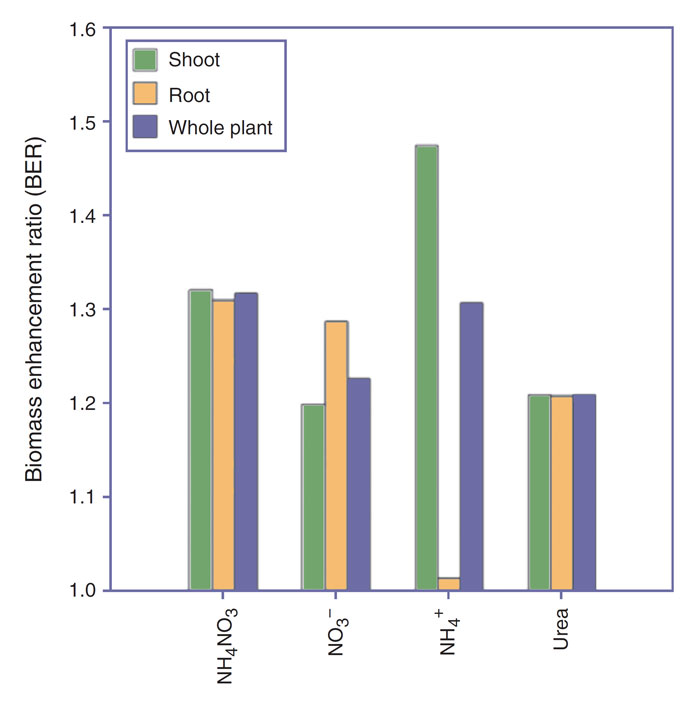The Combined Impacts of CO2 Fertilization and Nitrogen Supply on Wheat
Paper Reviewed Asif, M., Zora, S., Ceylan, Y., Rehman, R. and Ozturk, L. 2020. Nitrogen supply in combination of nitrate and ammonium enhances harnessing of elevated atmospheric CO2 through improved nitrogen and carbon metabolism in wheat (Triticum aestivum). Crop & Pasture Science 71: 101-112. Writing as introduction to their paper, Asif et al. (2020) note that multiple studies have reported interactive effects of elevated CO2 and nitrogen (N) fertilizer rate on wheat, yet few have investigated as much for different N sources. Understanding the interactive effects of various N sources in combination with elevated levels of atmospheric CO2, they say, is “a priority research topic,” which can greatly enhance the utilization of CO2-induced benefits to crop growth and their N use efficiency on a global scale. Thus, the group of researchers set out to “investigate the effect of elevated CO2 on photosynthetic performance indicators, biomass formation and carbon and N metabolism in wheat plants supplied with different N sources (NH4+, NO3–, NH4+ plus NO3–, urea). Their experiment was conducted hydroponically in a controlled-environment setting, where wheat (Triticum aestivum, cv. Ceyhan-99) plants were grown under either ambient (400 ppm) or elevated (700 ppm) CO2 concentrations and supplied with one of the four different N sources listed above over a period of 23 days. According to the authors, the results of their study “suggest that N supply in the form of NH4NO3 results in higher shoot and root biomass production under both ambient and elevated CO2 conditions [see Figure below] by sustaining enhanced photosynthesis and stable allocation of biomass and carbohydrates into shoots and roots compared with sole application of NO3–, NH4+ or urea.” Additionally, Asif et al. report that “in contrast to the general assumption of a decrease in total N concentration at elevated CO2, our results show no decrease in shoot or root N concentration at elevated CO2 except with urea supply.” This latter observation is important, because it suggests that protein and other micronutrient declines that are sometimes observed in crops at higher CO2 concentrations can be overcome by providing the right balance of N supply. And that possibility is not lost on the authors, who conclude that “adequate and balanced nutrition of C3 crops with NO3– and NH4+ [fertilization] is key to harnessing [the yield-enhancing benefits from] a future environment with elevated CO2.
 Figure 1. Biomass enhancement ratio (ratio of biomass at elevated CO2 to that of ambient CO2) for shoot, root and whole plant in 23-day-old wheat plants grown in hydroponic culture with four different sources of nitrogen (NH4NO3, NO3–, NH4+ and urea). Source: Asif et al. (2020).
Figure 1. Biomass enhancement ratio (ratio of biomass at elevated CO2 to that of ambient CO2) for shoot, root and whole plant in 23-day-old wheat plants grown in hydroponic culture with four different sources of nitrogen (NH4NO3, NO3–, NH4+ and urea). Source: Asif et al. (2020).